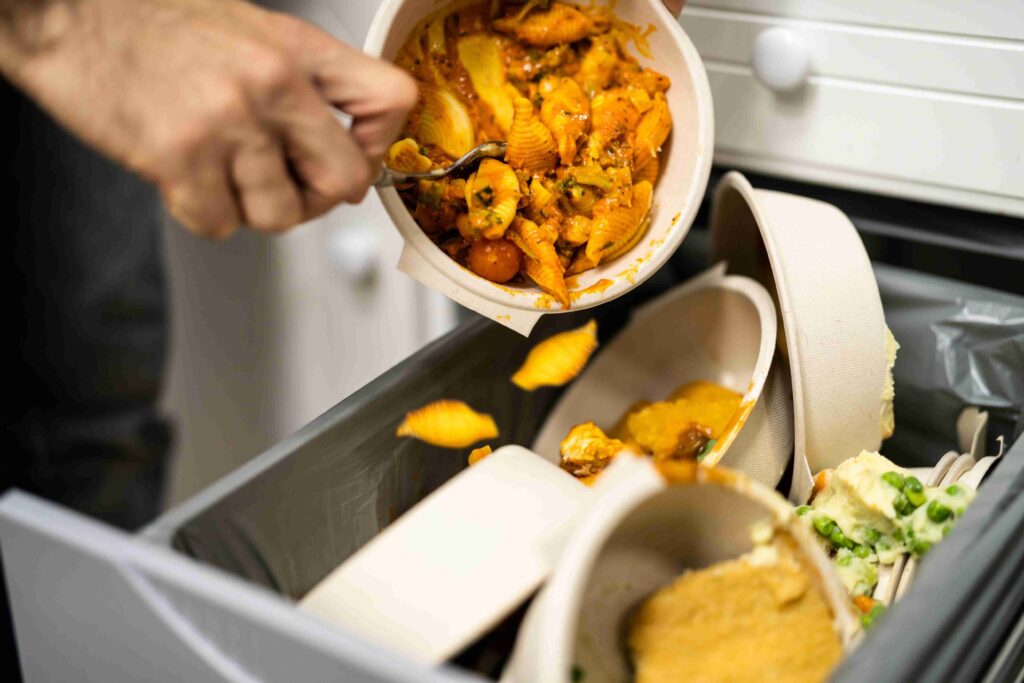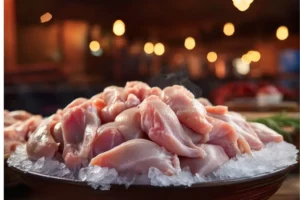Reducing food waste is crucial for any restaurant aiming for sustainability and profitability. Wasted food increases costs, impacts the environment, and affects the brand’s image. This guide offers practical, actionable tips to help minimise waste, save money, and run eco-friendly operations. Whether you’re managing a bustling café or a fine dining restaurant, these tips will help make a positive impact on your bottom line and the planet.
1. Monitor Inventory Closely
Effective inventory management is key to reducing waste in any restaurant. Regularly monitoring inventory helps prevent over-ordering and ensures that food is used before it spoils.
- Regular Audits: Conducting frequent inventory checks helps maintain accurate stock levels. By knowing exactly what’s on hand, you can make informed purchasing decisions and avoid overbuying. For example, a popular restaurant chain in the UK saved thousands annually by implementing bi-weekly audits, cutting down waste by over 20%.
- First In, First Out (FIFO): Implementing the FIFO method is a simple yet effective way to use up older stock first, thereby reducing spoilage. FIFO involves organising your stock so that older items are used before newer ones. For instance, place recently purchased items at the back of the shelves and bring older items to the front. This approach works well for items with shorter shelf lives like dairy, produce, and fresh meats.
- Digital Tracking: Many restaurants now rely on digital inventory systems to track stock levels, expiration dates, and purchasing patterns. These tools can prevent over-ordering and save time. Inventory management software like MarketMan or Orderly provides automated notifications for low stock, expiration warnings, and reports on waste levels, allowing your team to act before ingredients spoil.
2. Improve Portion Control
Proper portion control reduces waste, ensures consistency, and improves customer satisfaction.
- Standardised Recipes: Creating standardised recipes for each dish ensures that portions are consistent, helping avoid over-serving. Train your kitchen staff to follow these recipes strictly. A leading restaurant group found that by introducing standard portion sizes, they reduced food costs by 15% and noticed an increase in customer satisfaction.
- Training Staff: Staff training plays an important role in portion control. Make sure everyone understands the importance of serving the right amount. When staff are aware of portion guidelines, they are less likely to over-serve, which directly reduces waste.
- Adjustable Portions for Guests: Offer smaller or half portions to cater to different customer preferences. This flexibility allows guests to choose the amount they are likely to finish, reducing leftovers. Many restaurants are now offering a “small plate” option, which has proved popular among customers while cutting down waste significantly.
3. Repurpose Ingredients
Utilising surplus ingredients creatively can reduce food waste while adding value to your menu.
- Creative Use of Leftovers: Leftover ingredients can often be repurposed into new dishes. For instance, vegetable scraps can be used to make a flavourful stock, and stale bread can become croutons or breadcrumbs. A famous UK-based pub chain reduced their waste by using vegetable peelings and meat trimmings in soups and stews, offering these as ‘daily specials’.
- Specials Menu: Use surplus ingredients to create daily or weekly specials. This not only adds variety to your menu but also prevents waste. If you find you have excess tomatoes, for example, you could create a tomato-based soup or sauce special. Regular customers will appreciate the fresh options, and your kitchen will save on waste.
- Donation Options: When you have excess prepared food that is still safe to eat, consider donating it to local shelters or food banks. Some UK organisations like FareShare and Olio facilitate food donation from businesses to people in need, helping to reduce waste while supporting local communities.
4. Manage Storage Effectively
Proper storage is essential for keeping food fresh and extending its shelf life. Poor storage practices lead to spoilage, which can be easily avoided.
- Optimal Storage Conditions: Storing items at the correct temperature and humidity level is vital. For example, dairy and meat should be kept in the coldest part of the fridge, while vegetables are best stored in a cool, dry area. By storing foods properly, restaurants can extend their freshness and prevent spoilage.
- Clear Labelling: Label all food items with clear dates and expiration labels to keep track of their freshness. This helps staff know what needs to be used first, reducing the chances of ingredients going to waste. Some restaurants use colour-coded labels for ease of identification, ensuring that older stock is used first.
- Regular Stock Rotation: Rotate stock frequently to use older items before newer ones. By keeping stock well-organised, you can ensure that perishable items are used while they’re still fresh. This is especially important for high-turnover items like herbs, dairy, and fresh produce.
5. Forecast Demand Accurately
Accurate demand forecasting helps you prepare just the right amount, reducing the risk of overproduction and waste.
- Analyse Sales Data: Use historical sales data to identify peak times and adjust preparation accordingly. If certain dishes are more popular during weekends, for example, increase their ingredients only for those days. Many modern point-of-sale systems include analytics features that can help you track these patterns and make informed adjustments.
- Seasonal Planning: Adjust your menu according to seasonal availability to avoid surplus stock. By planning around seasonal ingredients, you can better control supply and demand. Seasonal menus are also attractive to customers, who enjoy fresh and varied options throughout the year.
- Flexible Menu: A flexible menu allows you to use ingredients you already have in stock, minimising the need to order more. Many successful restaurants keep some items on their menu flexible, allowing chefs to substitute ingredients based on what’s available.
6. Educate Staff on Waste Reduction
Engaging your staff in waste reduction efforts can create a stronger sense of accountability and encourage innovative ideas.
- Waste Awareness Training: Train your team on the importance of reducing waste and how it impacts the restaurant’s finances and sustainability goals. Employees are more likely to commit to waste reduction when they understand the impact.
- Rewarding Waste Reduction: Consider implementing incentives or rewards for employees who contribute to waste reduction. For example, recognising staff members for creative ideas on repurposing ingredients or using leftovers can encourage ongoing efforts.
- Involve Staff in Planning: Invite your staff to share their ideas for waste reduction. Kitchen staff, in particular, can often suggest practical ways to use up leftovers or adjust portion sizes without compromising quality.
7. Partner with Sustainable Suppliers
Working with eco-friendly and reliable suppliers helps eco-friendly restaurants to reduce food waste and run a more sustainable operation.
- Local Sourcing: Sourcing ingredients from local suppliers reduces transport time, ensuring fresher produce with a longer shelf life. Many UK restaurants have turned to local farms and markets, which provide fresher ingredients that last longer, reducing the likelihood of waste.
- Bulk Purchasing Smartly: Buy in bulk for non-perishable or high-turnover items only. This approach prevents the waste associated with bulk-buying perishable goods. For example, dried spices, grains, and canned goods can be safely purchased in bulk without the risk of spoilage.
- Eco-Friendly Suppliers: Partnering with suppliers who prioritise sustainability aligns your restaurant with eco-friendly practices. Many suppliers now offer eco-friendly packaging or recycling programmes, which help reduce waste and improve your restaurant’s green credentials.
Read More: How to Choose the Best Cost Saving Bravo Pizza Flour Supplier
Conclusion
Food waste management in restaurants not only benefits the environment but also supports a more profitable business. By monitoring inventory, improving portion control, repurposing ingredients, managing storage effectively, and educating your team, you can make a significant impact on waste reduction. Embracing sustainable restaurant practices like accurate demand forecasting and partnering with local, eco-friendly suppliers can further enhance these efforts. Consider implementing these tips in your restaurant today to save money, boost sustainability, and strengthen your reputation among eco-conscious customers. If you’re looking to partner with a sustainable food wholesaler to support your waste reduction goals, explore options that align with your values and offer reliable service.










